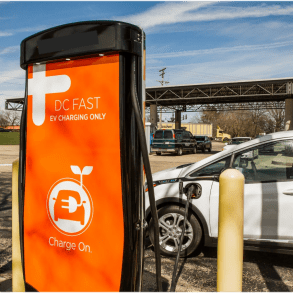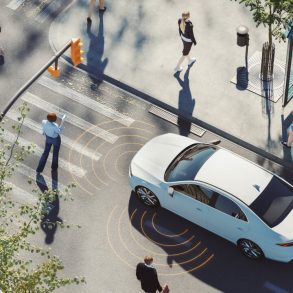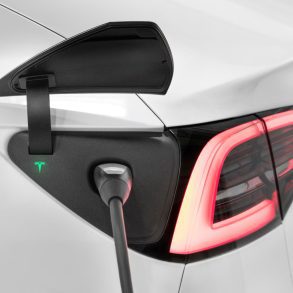When looking at the automotive market, some of the key factors influencing consumer decisions are current and predicted future trends. Many buyers are wanting to “future proof,” that is buying a vehicle that not only suits their needs for the present day, but also for the next 3 to 5 years. That time period is quite specific as that is the common warranty period for many vehicles, as well as lease/financing timeframes.
Future proofing, however, is becoming so difficult to nail down that the automotive market has experienced quite a few shifts in just the past 2 years. For example, ask anyone in 2022 what the future of the market would be and there would be a very confident statement that EVs are the future.
Two years later, and EV sales are stalling out and hybrid sales are skyrocketing. In 2023, the number of hybrids bought in the USA alone topped 1 million.
It is because of that volatility that we will be looking at the most impactful, sometimes the most obscure trends, not the big obvious ones. This is because these trends might one day rise to be the key factor in buyers’ decisions.
As the market shifts so rapidly, do keep in mind that even we can be completely and utterly wrong. We are only working with the data and numbers we have as of May 2024, and these trends may change in a month, a year, or a decade.
Autonomous Vehicles
To understand autonomous vehicles (AVs), one first needs to know the SAE Autonomous scale. Level 0 vehicles are 100% human driven, while Level 5 vehicles are completely “hands-off.” To give a point of reference, Tesla’s Autopilot and Ford’s Argo systems are at the very edge of Level 2 and touching at Level 3, meaning that the vehicle can drive itself but requires a human to be present to take over. This is known as “Partial automation.”

At Level 3, there are only about 1,400 AVs on American roads today, and all of them are test and proof-of-concept vehicles. Level 3 requires a human to be present and aware, but the vehicle itself is doing 99% of the driving. This includes reading road signs and traffic lights, navigating congestion and switching lanes, even up to planning the route using sat nav. This is known as “Conditional automation,” and is the current target of most AV companies at the moment.

It might surprise you to know that if you lower the bar to Level 1, there are over 30 million vehicles on American roads today that fit the parameters. These are vehicles that will engage emergency braking before you can react and/or that use radar and laser guided cruise control to keep a constant distance to the vehicle in front. Even lane departure assist, which nudges the vehicle back into the center of the lane, is Level 1.
While true Level 5 AVs are still well into the future, it is the rise of vehicles to at minimum Level 2 and possibly to Level 3 that are the trend for the next 3 to 5 years. This is especially true now that the US Federal Government has mandated that all vehicles must have automated emergency braking systems by 2028 to pass legality requirements for sale in America.

It is expected that vehicles with at least Level 1 systems on board will crest over 54 million by the end of 2024. That number is also expected to grow exponentially into the hundreds of millions within the next 3 to 5 years.
It is such a low-key but vital trend that at current estimates, AV research and development has a valuation of over $200 billion as of January this year. Basically, partially self-driving cars are coming, and sooner than you may think.
True Dealerships Diminish, New Vehicle Purchasing Shifts Primarily Online
In the 2010s, if you wanted to buy a car online, you were very limited in options. Used cars were the prime target for online buying, or you were ordering a Tesla EV. Otherwise, you physically visited a dealership, had a test drive, haggled with the salesperson, and left either with the keys or with the next dealership you wanted to visit in mind.
In 2019, only 4.2% of all new vehicles sold in the USA had the entire process done digitally. Tesla accounted for approximately 3.8% of that, as 2019 was the year that they closed all their showrooms and went exclusively online. In 2024, you can get most of the way to buying any car digitally, but the sales system still operates in a “Walk the last mile” method of actually going to a dealership to finalize the sale.

Last year, consumer research polls showed that fully 92% of respondents said they read reviews and gather information online before making a purchase. 83% of respondents also wished they could complete the entire purchase transaction, from selecting the spec of the vehicle to putting down their deposit, completely online. This has not escaped the notice of manufacturers, and in a very subtle way you might have noticed how online “Build & Price” configurators have changed.
Instead of giving you a rough estimate of your build price and monthly payments, the sites are now saying “Forward this build to your dealership.” You will also be able to perform a financing/leasing pre-approval process right after as well for most manufacturers, and have that also forwarded to the dealership.

It is expected that by the 2027-2028 fiscal year, many manufacturers will have moved some, if not all, of their models to an online model. Dealerships will still exist for those that want to go the traditional route, but more likely than not, you will do all the “legwork” sitting comfortably in your home on your computer or tablet. The only reason to visit the dealership will be to pick up your new car when it arrives.
“Micromobility” Will Be (& Already Is) Affecting Automotive Sales
Micromobility is a newer bit of terminology, so don’t be surprised if you’ve never heard of it. What it defines is the decrease in the reliance on macromobility, that being a full sized vehicle, in favor of smaller and more efficient modes of transport. These are things like eBikes, electric scooters, electric mopeds and sit-on scooters (such as Vespas). Basically, anything with less than four wheels.
This has come about in a combination of environmental awareness, rises in traffic congestion, and the simple fact that smaller vehicles can go places bigger ones can’t. Over the past 5 years, there has been a marked decrease in those that commute to work by car, instead commuting via micromobility. In 2019, roughly 85% of workers commuted via personal vehicles. By 2022, that had fallen to 76%, and in 2023 it was down to 74%.

Between 2020 and 2021 alone, the sales rate of eBikes rose by a stunning 240%, and hasn’t really slowed down at all since. EBikes have also evolved so rapidly over the past four years that the average range per charge on them has increased by over 80%.
It is fairly common now for the median minimum range of any eBike of note to be 25+ miles instead of just 15 to 20. For those in urban environments, that is often more than enough to commute both to and from work on a single charge.
Even more prevalent than eBikes, electric scooters are a massive growth industry, worth $15.22 billion in 2021. At a compound annual growth rate of at least 10.7%, by 2028 the industry is expected to be valued at more than $32 billion.

They are also very prevalent. If you live in any major city of note, you’ve likely already seen hundreds of electric scooters on sidewalks or in specific parking areas, as the highest use of them is via per-ride rentals via an app.
So what does this mean in terms of the automotive market? In rural areas, not much, but for suburban and urban areas, there have already been smaller year-over-year sales increases in the past few years.
They are expected to keep falling through to 2028 at a roughly 1% per year decrease across the entire industry as well, as more and more eBikes and scooters are sold at a median growth rate well North of 5%.
Luxury Brands Are Expected To See Growth
While the past 3 to 4 years have been rough for almost the entirety of the automotive market, there was one area that not only survived, but thrived.
Luxury vehicles, defined in this case as being valued at over $80,000, are expected to have a CAGR of up to 14% through to 2031. In fact, vehicles valued at over $100,000 MSRP have been outselling lower-priced “luxury” vehicles in America in the past 3 years alone.

For example, in 2021, Rolls-Royce had their best year in decades, selling 5,586 vehicles globally, an increase over 2020’s sales by 49%. They moved 6,032 units in 2023, the most ever in the brand’s 119 year history. Despite a small decrease in year-over-year sales, they are on track to break that record in 2024 with 1,525 units sold in Q1 2024 alone.
This area of the automotive market is so lucrative that even Toyota, who already has a luxury brand with Lexus, doubled down and made an ultra-luxury brand, Century.

Other manufacturers have diversified their holdings. The VW Group has simplified the model range for Bentley, but offered more powertrain options. BMW has introduced the first full EV Rolls-Royce, the Spectre, at a time when general EV sales are stalled out, and it’s selling well.
Much of this profitability can be associated with the growth of ultra-high-net-worth individuals (UHNWI) by about 5% per year in the US alone. These are people whose total net worth exceeds $20 million in value after considering assets and liabilities. These are the precise type of customer that companies such as Rolls-Royce, Bugatti, Bentley, Mercedes-Maybach, and the like market their products to.
It has been working very well, as it turns out, with no signs of sales slowing.
Car Connectivity Will Increase Exponentially
To clarify, by connected we mean that the car can communicate to the manufacturer, and even to each other, via wi-fi and cellular signals. Connectivity to a smartphone for music streaming or Android Auto/Apple CarPlay is not the metric we are discussing here, as that is in almost every new vehicle sold today.
The reason for this connectivity was started in the EV market, as “over the air” updates became the norm. That connectivity migrated somewhat to petrol power and hybrid powered vehicles in the 2010s, for example Ford’s SYNC infotainment system using local wifi to install software and sat nav updates.

However, since the start of 2023, almost every vehicle sold has a way to communicate with the manufacturer. This could be through a subscription service such as OnStar, or integrated as an “Expected feature” such as BMW’s infotainment system checking for updates every time you start your car.
What is worrying about these communications is that they are often not heavily encrypted. This means that if a malicious party with the right type of hardware intercepts that signal, they can get everything from your vehicle’s VIN to the correct frequency to unlock your doors remotely. They could even intercept the remote start command to start your engine, without even needing to approach your vehicle.
In 2020, there were 47.5 million vehicles on US roads with this type of “Internet of Things” connectivity. That number reached over 80 million in 2023, and is growing exponentially. By 2027, it is expected that fully a third of all cars on American roads will be connected, exceeding 175 million vehicles. The expectation is that connected vehicles will crest over 200 million by the end of 2029.
Average Age Of Cars Bought Continues To Increase
The used market is really enjoying these modern times, as they are starting to see record amounts of sales. New vehicles, despite being desirable, are continuing to trend towards higher in prices, so the used market is where many first time and second time buyers are now turning to.
The average age of a used car bought in 2014 was approximately 6 to 10 years. In 2022, that age range hit 8 to 12.5 years, and today anything up to 14 years old is considered viable. This demonstrates a trend that those looking to buy are becoming more and more amenable to having a certified pre-owned vehicle over a brand spanking new one. This is driven mostly by wanting to get better value for money, with some consideration also in mind for better loan rates from personal banks instead of going through dealership financing/leasing.

You can even see this yourself by looking at your local used car dealerships inventories online. On average, anything that was made in 2010 or later will be at a mild premium price. Some might even be at a marked premium for a highly desirable model like a Ford Mustang. Even with hundreds of thousands of miles on the car, they are still selling at a rate that outpaces new cars almost 3 to 1.
While the private used market still heavily outpaces dealership used lots, even there many vehicles are holding their value very well. Looking for something like a Honda Civic from 2010, as long as it isn’t the base model, will often land at prices near $10,000.

The higher the trim also seems to mean the more value is held. An example is looking at a 2018 Honda Civic Type R (right on that 6 year mark) on almost any online marketplace will see prices at $37,000 or more on average. For a car that cost $37,000 new before dealership markups, fees, liens, and financing.
In Sum
There are way, way more trends out there that affect the market daily, but this article would be a novel if we tried to cover them all. That’s why we looked more at the ones that are either less obvious such as connectivity, or might have a bigger impact than one might think such as micromobility.
We also must disclaim that even though we’ve done the research and looked at the available data, as with every type of analysis, we could be completely wrong. The world works and moves in mysterious ways, and perhaps there is a massive price drop for new vehicles on the horizon that no one can predict. It’s unlikely, but not impossible.









